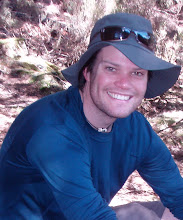 to a ball), pin the tail on the water buffalo, sack races and a number of local games.
to a ball), pin the tail on the water buffalo, sack races and a number of local games.Interesting, the labels faded very quickly and soon were no where to to be seen. Names, people and personalities not only emerged but were celebrated. Everyone participated in everything; where had the disability gone? There were tears of laughter, loads of smiles, participation, excitement and what I found most interesting, the abundance of confidence to just get in and have a go, no matter what and with absolutely no fear of failure. It got me thinking, Nata?(why?)
Who, what and how is ‘disability’ created? Because from what I have just witnessed; these people may have looked different, walked different, may not have heard or saw the same as I did, but they were in no way disabled...at all! Who is creating the disability label and placing it on the person. How did the disability just disappear like that? What were they doing that was so different?
 Simon works very hard on first raising the confidence of the person. They hold workshops that highlight the persons strengths, not focus on what they can’t do. It made me reflect on the Australian health systems and question, do our systems really create empowerment for people or does it create a dependence, and more disability, due to its focus on ‘problems’. While I can not answer these big picture question or change thing on a large scale quickly, I surely can and have asked myself these same questions. Am I affording empowerment or and I affording disability though my ‘therapy’. How can I ensure that I empower and build confidence not create more disability and dependence.
Simon works very hard on first raising the confidence of the person. They hold workshops that highlight the persons strengths, not focus on what they can’t do. It made me reflect on the Australian health systems and question, do our systems really create empowerment for people or does it create a dependence, and more disability, due to its focus on ‘problems’. While I can not answer these big picture question or change thing on a large scale quickly, I surely can and have asked myself these same questions. Am I affording empowerment or and I affording disability though my ‘therapy’. How can I ensure that I empower and build confidence not create more disability and dependence.With OT I especially think its about utilising the abilities of a person and thinking outside the box for 'intervention' or 'rehabilitation'. I feel that we loose this sometimes, with pressures of wait lists, high caseloads and a mentality of right, ‘how can I help?” It is through this that we loose sight of the persons true abilities as well as their own strengths to be creative and problem solve. Today, I saw a 7 year old boy with bilateral upper limb deficiency (above elbow), and leg length discrepancy of 20 cm, walk the full street parade of 2 km, play every game, draw an amazingly detailed picture with his toes, and eat independently with his arms; no adaptive devises, fully independent going for it.
One child (12 yo) impression of the theme, He said every person in this picture has a disability, can you see them???
The creative genius of the person really shone today, and focused it for me, how often in the past did I underestimated it, sometimes allowing the professional v’s client power relationship to over take. The person is the real expert in themselves and are so cleaver in figuring out how to modify activity and environment something ever so slightly to enable participation. It was great to see the kids with vision impairment, play ‘soccer’ with a tin can with a rock taped inside the can, so that everyone can see the ‘ball’. It really re-enforced my role as a sounding board and creative thinker to a person, and not the ‘professional’ or ‘expert’. How important it is to empower, not to do. Today it really emphasized to me, being an OT is not necessarily about making things easier but possible. The young boy was putting in a massive effort but was able and passionate about doing the things the way he was.
Some of the communities we go into we get stuck on the idea of 'rehabilitation' being to make someone normal - eg if someone is an amputee we may ask them what they need and they'll say - Money, for a prosthesis. However this person may have had no leg for 10 years and gets around fine without a leg - works in the farm, feeds his family... performs all his occupational roles, however its the community that needs the rehabilitation (to their way of thinking and limiting someone with no leg) and actually all he needs is some adaptive techniques on how he can go about his ADLs to reduce the chance of secondary impairments. We need to look at the functional level of the individual and focus on improving function within context.
As OT’s should we really be looking at changing the person, maybe the person focus should be about building confidence, and our focus should be more on community education. This may be old news for those who have been in the industry for longer then I have, however what I really would like people to think about is, no matter what you do... am I really empowering and making the disability disappear or am I adding to the disability?









No comments:
Post a Comment